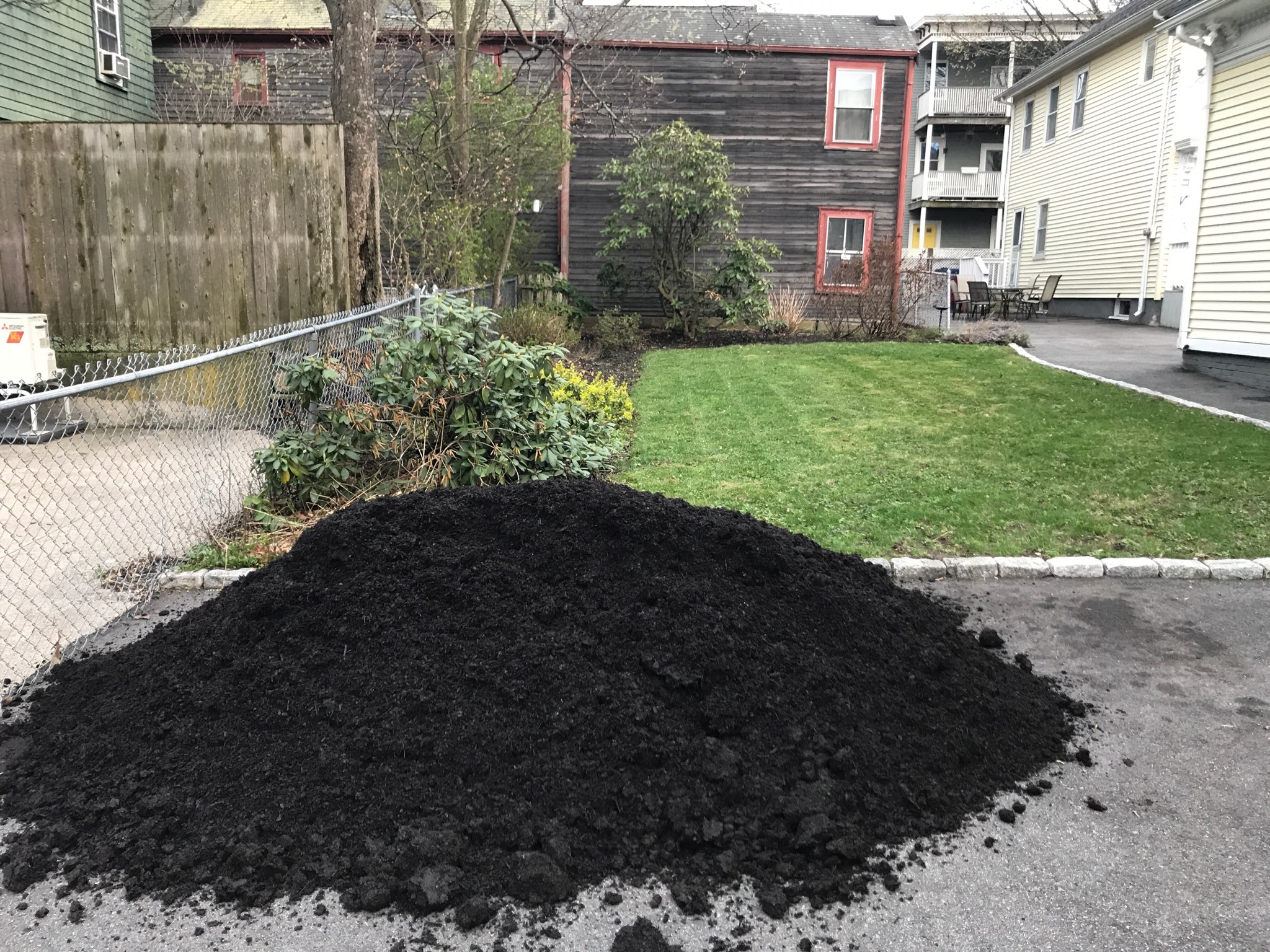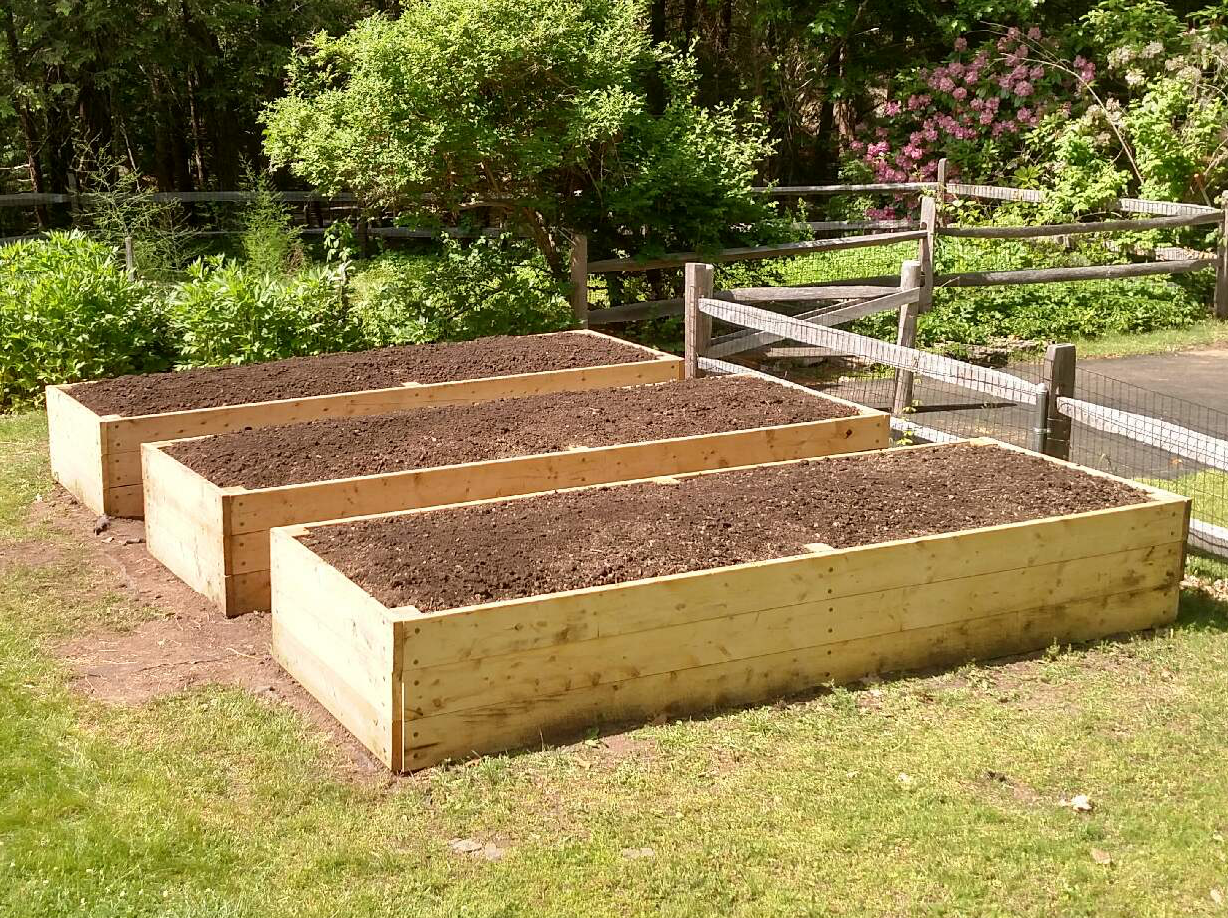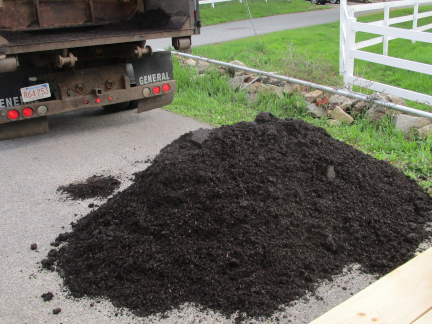'The Great Suburban Drawdown Challenge'
Turn Your Yard into a Carbon Sink
Right now, a global effort is being made to increase soil organic matter content by .4% per year in the top 30-40cm of agricultural soils. Think grasslands, pastures and forest soils. We want to raise the bar and extend this movement to suburban lawns, because locally that is the lowest hanging fruit for pulling down carbon from the atmosphere.
Order 'Compost for Carbon Drawdown'
Compost in Soil Sequesters C02 from the Atmosphere
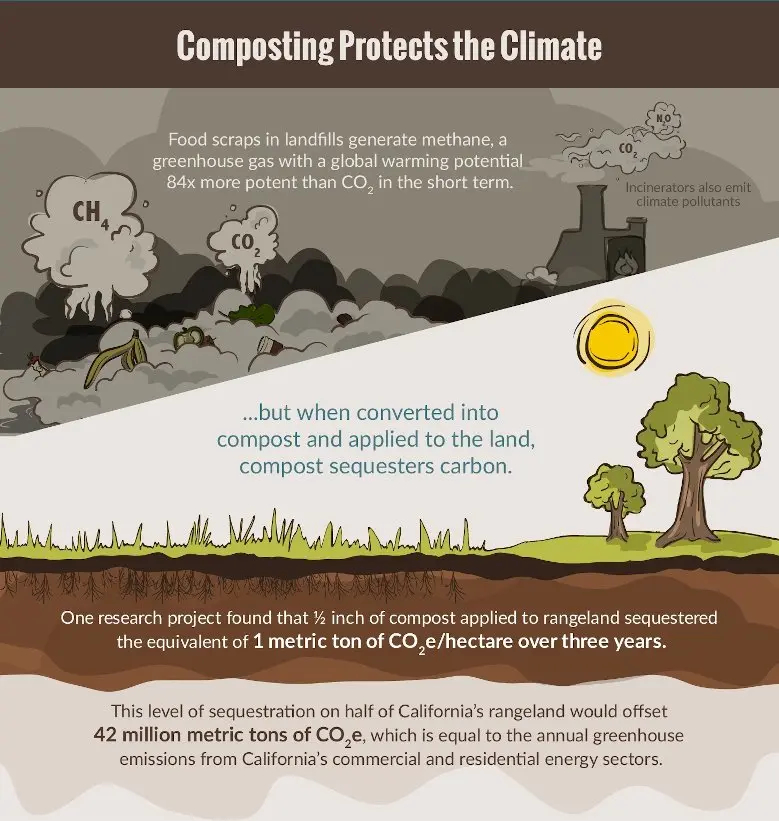
Compost Improves Soil Health
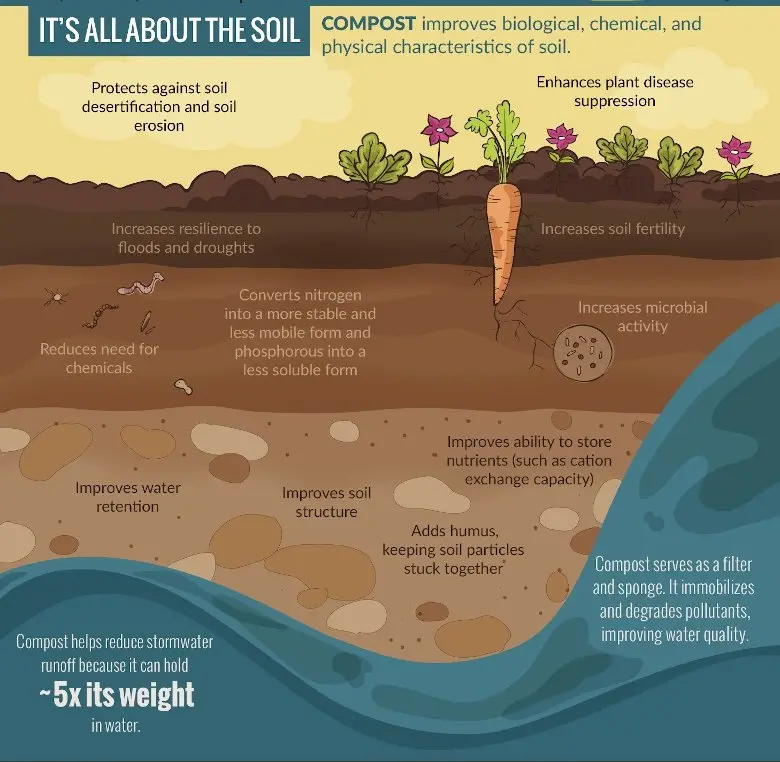
Increasing soil organic matter on agricultural land and in your yard will stabilize the climate and improve plant health by making soils more productive and resilient. Your lawn will need less synthetic inputs (fertilizer, herbicides, pesticides) and will allow more water to be absorbed and filtered by your lawn.
Read more about it in these BioCycle Articles:
The Great American Lawn
Can Compost Drawdown Carbon?
Calculate your Carbon Footprint
You too can take action and participate in this global effort. We challenge you to drawdown carbon right in your backyard by doing one or more of the following practices. Together, every little bit helps.
Easy to Implement Carbon Management Practices that use Compost
1. Feed your soil. Spread 1 inch of compost in fall on all garden beds, then incorporate it into soil with light shoveling. Result - Improves your soil for next year’s plantings. Increases Soil Organic Matter. Prepare’s for a cover crop if you desire.
2. Feed your trees. Spread ½ inch of compost in the drip line of all trees. Starting 3 ft from trunk out to edge of dripline. Result - Puts the compost right where the tree’s feeder roots are. Leads to stronger trees, more shade, more soil development by the tree.
3. Lawn seeding, thatching and compost spreading. Spread compost with a shovel on your lawn, then use a spring rake to distribute it between the grass blades. If seeding the grass, spread seed before spreading compost. Thatch mow after to act as a mulch on top. Result - The thatch layers over the compost which keeps it moist and thus active. Doing this layering once per year and thatching everytime you mow will build up organic matter in your soil.
4. Fertilize with compost tea. If you are able to mix compost with water and let it saturate then screen it, the newly invigorated water is a compost tea that is super nutrient dense and a
great way to fertilize lawns or gardens and keep things healthy during dry spells or droughts.
5. Hire an organic lawn care company. Visit your Black Earth account page and click Sustainable Partners. Get a quote for organic lawn care. Reduces inputs on your lawn and have a professional take care of it.
Additional Simple Carbon Management Practices for your Yard
1. Cut grass taller. Raising your blade by ½ inch can give you
another 5-10 days between mows. Some landscapers may not want to do
this because it messes up their schedule. However fewer mows means less
gas burned and more resilient grass. Short grass is very susceptible
to drying out.
2. Plant a pollinator garden. Dig up 4ft x 4ft area of lawn. Shake out dirt (Compost the grass). Add compost. Spread pollinator seed packet (ideally one that is hardy for fall planting). Result - Promotes pollinators. Discover the myriad of pollinators that come to your new garden.
3. Grow greens. Greens need to be fresh at the grocery store, which means lots of refrigeration, transportation and ultimately waste when they go bad. Grow greens at home to tap into Black Earth’s mineral content. Look up Cut-and-Come-Again greens on the Internet. Result - Fresh greens every night through fall.
4. Plant a tree. Start new trees coming up in your yard to replace existing ones that may come down in the future. Consult your local tree warden on what types of trees and how to plant. Utilize trees on the sunny sides of your home to reduce heat gain (and thus home cooling needed). Use compost when planting the tree and loosen soil in a large hole for the new tree.
5. Grow plants from seed. Buying starters (especially trees and bushes) from a garden center requires a lot of carbon output to get those starters from the farm to you. Trying to replicate nature is easy, and an acorn turns into a hearty tree seedling in a season. Grow these indoors or away from squirrels/chipmunks for the first 2 years before planting. Result - Gives you ‘free’ trees. Pride of growing your own trees. Choice of trees.
Community Management Practices
1. Share your tools - Just because mowers, hedge trimmers, leaf blowers, weed wackers etc. are becoming electric, does not mean there is zero impact. These tools only get used by each homeowner a few times each year. That is a lot of idle copper/lithium and other mined minerals sitting in sheds. Consider sharing your yard equipment with your neighbour to reduce the total amount of materials society needs. If each house shared with 1 other house, we could halve the amount of power tools needed. That is the power of going from 1 to 2!
2. Create or join a community garden group. Share plants and knowledge. Convert community spaces into more garden plots.
Take It One Step Further
1. Regenerative Farming. Read up on Regenerative Farming techniques that can be applied to the home garden. These practices focus on nutrient dense soils and low disturbance in order to improve soil health.
2. Plant cover crops. Start
cover crops after you clean out your beds in the fall. Cover crops
hold onto nutrients and can increase nitrogen for next spring if you use
a legume.
3. Install a Hugelkultur! Spread ½ inch of compost in forested areas BEFORE leaves come down in fall. As a bonus… BEFORE leaves come down in fall, break up brush/sticks/small branches into 6-12
inch lengths. Spread these sticks in forested areas BEFORE leaves come down. Encourages natural forest landscape, prevents leaves from matting, allows fungi to break down wood on site, gets children engaged
PDF Carbon Drawdown instructions for printing. Instructions graphics of different ways to apply compost to your yard, trees and shrubs to drawdown carbon. Plus additional tips.


